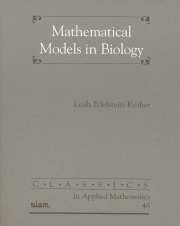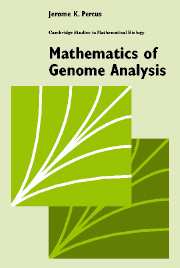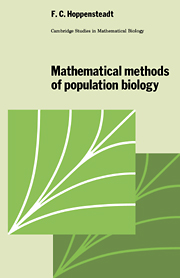Mathematical Models in Biology
AUD$110.00 inc GST
Part of Classics in Applied Mathematics
- Author: Leah Edelstein-Keshet, University of British Columbia, Vancouver
- Date Published: February 2005
- availability: This item is not supplied by Cambridge University Press in your region. Please contact Soc for Industrial & Applied Mathematics for availability.
- format: Paperback
- isbn: 9780898715545
AUD$
110.00
inc GST
Paperback
Looking for an inspection copy?
Please email [email protected] to enquire about an inspection copy of this book
-
Mathematical Models in Biology is an introductory book for readers interested in biological applications of mathematics and modeling in biology. Connections are made between diverse biological examples linked by common mathematical themes, exploring a variety of discrete and continuous ordinary and partial differential equation models. Although great advances have taken place in many of the topics covered, the simple lessons contained in Mathematical Models in Biology are still important and informative. Shortly after the first publication of Mathematical Models in Biology, the genomics revolution turned Mathematical Biology into a prominent area of interdisciplinary research. In this new millennium, biologists have discovered that mathematics is not only useful, but indispensable! As a result, there has been much resurgent interest in, and a huge expansion of, the fields collectively called mathematical biology. This book serves as a basic introduction to concepts in deterministic biological modeling.
Read more- Suitable for anyone with essentially only a background knowledge of calculus and high-school algebra
- Originally intended for third- and fourth-year undergraduate students, the book has also proved useful for beginning graduate students as well as researchers in mathematics
- A favourite in the mathematical biology community since its first publication, it shows how relatively simple mathematics can be applied to a variety of models to draw interesting conclusions
Customer reviews
Not yet reviewed
Be the first to review
Review was not posted due to profanity
×Product details
- Date Published: February 2005
- format: Paperback
- isbn: 9780898715545
- length: 184 pages
- dimensions: 231 x 184 x 32 mm
- weight: 1.3kg
- availability: This item is not supplied by Cambridge University Press in your region. Please contact Soc for Industrial & Applied Mathematics for availability.
Table of Contents
Part I. Discrete Process in Biology:
1. The theory of linear difference equations applied to population growth
2. Nonlinear difference equations
3. Applications of nonlinear difference equations to population biology
Part II. Continuous Processes and Ordinary Differential Equations:
4. An introduction to continuous models
5. Phase-plane methods and qualitative solutions
6. Applications of continuous models to population dynamics
7. Models for molecular events
8. Limit cycles, oscillations, and excitable systems
Part III. Spatially Distributed Systems and Partial Differential Equation Models:
9. An introduction to partial differential equations and diffusion in biological settings
10. Partial differential equation models in biology
11. Models for development and pattern formation in biological systems
Selected answers
Author index
Subject index.
Sorry, this resource is locked
Please register or sign in to request access. If you are having problems accessing these resources please email [email protected]
Register Sign in» Proceed
You are now leaving the Cambridge University Press website. Your eBook purchase and download will be completed by our partner www.ebooks.com. Please see the permission section of the www.ebooks.com catalogue page for details of the print & copy limits on our eBooks.
Continue ×Are you sure you want to delete your account?
This cannot be undone.
Thank you for your feedback which will help us improve our service.
If you requested a response, we will make sure to get back to you shortly.
×






